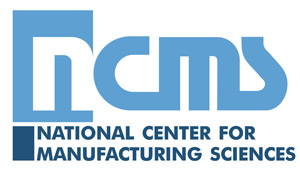Rapid Prototyping Technology Advancement (RPTA) II
NCMS Project #: 140207
Problem: The Rapid Prototyping Technology Advancement (RPTA) Program was formed to advance the use and development of emerging rapid prototyping (RP) technologies through collaborations among RP users within the industrial and government communities for the purpose of transferring RP skills, inserting RP technologies, and increasing the use of RP in DOD maintenance activities. Although usage of rapid prototyping (RP) technology had advanced beyond concept modeling by 1999, few DOD maintenance activities (depots) were yet experienced in the utilization of RP.
The participating depots seized the opportunity to partner and create repair parts and tooling in support of their needs and successfully demonstrated ability to utilize RP to reduce lead time and cost for specific repair parts, thus improving readiness of the Warfighter.
Skill transfer, RP training, and RP technology insertion were accomplished through collaboration on new-generation equipment pilots, case study demonstrations, and team sponsored training events.
Benefit: The RPTA team increased the use of RP technologies in depot maintenance activities and increased inter-depot cooperation in the utilization of RP resources. Benefits included end item design or material improvements, process improvements, lead time and manhour reductions, and associated cost avoidance.
Solution/Approach: Frequently, intangible benefits can be more far-reaching than financial ones. RPTA fostered the establishment of cooperative relationships across maintenance depots as an outgrowth of the culture of cooperation and partnership among the entire team. These relationships promise to generate beneficial outcomes for the DOD for years to come. One case study, shown below, serves to demonstrate the synergy of the team and especially that of the depots in collaborating to solve a problem. Their relationship continues today in support of the design, pattern-making and casting of submarine components.
Initial training typically consisted of a combined 1or 2 day workshop to educate the personnel on the potential of RP and a tour of the facility specifically to identify applications that would benefit from RP technologies. Thirty-three (33) training events occurred during the four (4) year project, including specialty training and demonstrations for depot personnel by RP vendors and non-depot team members in the use of specific RP technologies, materials, and modeling software. An introductory e-Learning course in RP, available on CD-ROM, was prepared by NCMS for ongoing depot use.
Impact on Warfighter: Readiness benefits included improved throughput cycle time and part availability for Weapons Systems R&O. Cost avoidance included savings in raw material and labor costs over traditional R&O practices.
DOD Participation:
- U.S. Navy (TRF Kings Bay)
- U.S. Navy (NUWC Keyport)
- U.S. Navy (NNSY, NFPC Philadelphia Detachment)
- U.S. Navy (NAWC China Lake)
- U.S. Navy (Pearl Harbor)
- U.S. Navy (Portsmouth)
- U.S. Army (Anniston)
- U.S. Army (Tobyhanna)
- U.S. Air Force (OC-ALC)
Industry Participation:
- Raytheon Systems Company
- Eastman Kodak Company
- Pratt & Whitney
- General Pattern Company
- Baxter Healthcare
- NCMS
